Table of Contents
Let's be honest, who doesn't love a big bowl of mac and cheese? It's the ultimate comfort food, a warm hug in a bowl. But what if you're trying to cut back on carbs? Does that mean saying goodbye to cheesy goodness? Absolutely not! I've been on a mission to create the perfect low-carb mac and cheese with gruyere, and let me tell you, I've cracked the code. We're not talking about some sad, cauliflower-pretending-to-be-pasta dish here. No, this is the real deal: rich, creamy, and satisfying, without all the carbs. In this article, I'll walk you through every step, from picking the right cheese to getting that perfect velvety sauce. Get ready to discover how you can enjoy your favorite comfort food without any of the guilt. We will be exploring why this dish is a game-changer, the importance of gruyere, and the simple steps to making it. We will also cover tips, customization, storage, and nutritional information. So, grab your apron, and let's get cheesy!
Why LowCarb Mac and Cheese is a Game Changer
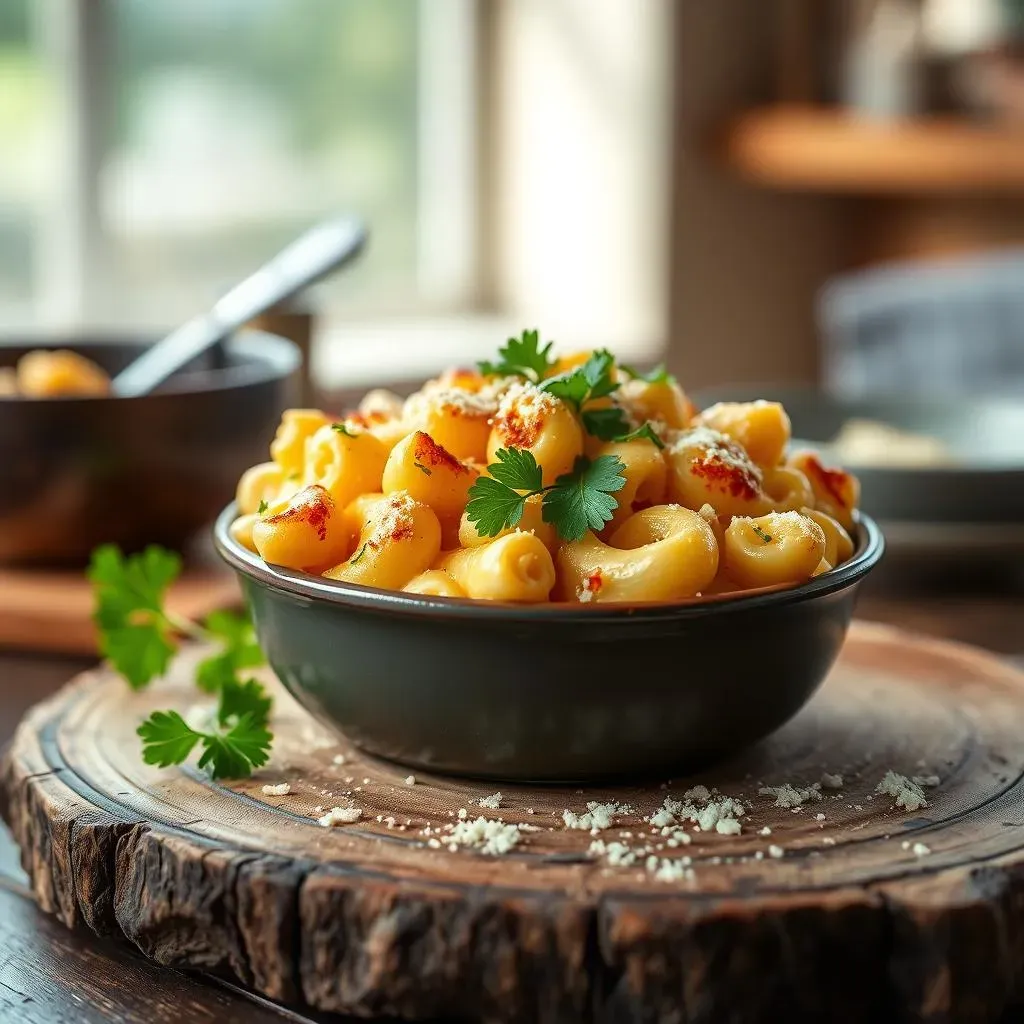
Why LowCarb Mac and Cheese is a Game Changer
The Comfort Food Dilemma
Let's face it, we all have those days when only a big bowl of mac and cheese will do. It's the ultimate comfort food, a nostalgic trip back to childhood, and a guaranteed mood booster. But here's the rub: traditional mac and cheese is loaded with carbs, often leaving us feeling sluggish and guilty afterward. If you're like me, you’ve probably tried to resist the cheesy siren call, but let’s be real, sometimes you just need that creamy goodness without derailing your healthy habits. That’s where low-carb mac and cheese steps in, like a superhero in a cheese-covered cape.
It's not just about cutting carbs; it's about enjoying the food you love without the negative side effects. I mean, who wants to feel like they've eaten a brick after a meal? With low-carb options, you can indulge in that classic mac and cheese flavor and texture, but without the carb crash. It's a win-win situation that allows you to enjoy your favorite dishes while keeping your health goals in check. It's about smart swaps, not deprivation, and that makes all the difference.
A Healthier Indulgence
The beauty of low-carb mac and cheese is that it opens up a world of possibilities. It's not just for those following a strict keto diet. It’s a fantastic option for anyone looking to reduce their carbohydrate intake, manage blood sugar levels, or simply make healthier food choices. By swapping out traditional pasta for a low-carb alternative, you're not only cutting down on carbs but also often increasing your intake of fiber and protein, depending on the pasta you choose. It's a clever way to sneak in some extra nutrients without sacrificing flavor. It allows you to enjoy the creamy, cheesy flavors you love, without the guilt associated with a high-carb meal.
More Than Just a Trend
Low-carb mac and cheese isn't just a fleeting trend; it’s a testament to how we can adapt and enjoy our favorite meals while prioritizing our health. It's about finding creative solutions that allow us to have our cake and eat it too, or in this case, our mac and cheese and enjoy it too! This isn't about restriction. It’s about options. It's about reclaiming comfort food and making it work for your lifestyle. So, if you’ve been avoiding mac and cheese because of the carb overload, it's time to reconsider. With the right ingredients and a little know-how, you can enjoy this classic dish without any of the guilt. It’s a game-changer, plain and simple.
Benefit | Description |
|---|---|
Reduced Carb Intake | Lower carbohydrate consumption compared to traditional mac and cheese. |
Better Blood Sugar Control | Helps manage blood sugar levels, especially important for those with diabetes or insulin resistance. |
Increased Fiber and Protein | Often incorporates higher fiber and protein ingredients, promoting satiety and better nutrition. |
Enjoyment Without Guilt | Allows you to indulge in comfort food without compromising your health goals. |
Versatile and Customizable | Can be adapted with various low-carb pasta options, cheeses, and seasonings. |
The Star of the Show: Gruyere Cheese

The Star of the Show: Gruyere Cheese
Why Gruyere is a Must for Mac and Cheese
Okay, so we've established that we're making low-carb mac and cheese, but let's talk about the real hero of this dish: Gruyere cheese. I mean, you could use any cheese, right? But trust me, once you've tried mac and cheese with Gruyere, there's no going back. It's not just cheese; it's an experience. Gruyere brings a nutty, slightly earthy flavor that other cheeses just can't replicate. It's got a complex profile that adds depth and sophistication to this classic comfort food. It isn't just about the taste, though. Gruyere melts like a dream, creating that super smooth, velvety sauce that we all crave. It's the key to avoiding any grainy or clumpy texture.
Think of it like this: cheddar is your reliable friend, always there for you. But Gruyere is the cool, sophisticated cousin who shows up and makes everything a little more interesting. It's not overpowering, but it's definitely noticeable, adding a layer of flavor that will make you go, "Wow, what is that?" That's the magic of Gruyere, it elevates a simple dish into something extraordinary. It’s the secret ingredient that will make your low-carb mac and cheese taste like it came from a fancy restaurant, not your kitchen. It's the difference between "good" and "amazing" and I'm all about "amazing," aren't you?
The Flavor Profile and Melting Magic
Gruyere's flavor is what really sets it apart. It's got this wonderful balance of sweet and savory, with a hint of nuttiness that is just so comforting. It's not a sharp cheese, but it does have a distinct flavor that holds its own without overpowering the dish. It's that perfect middle ground that makes it ideal for mac and cheese. And let's talk about melting, because that's where Gruyere truly shines. Unlike some cheeses that can become oily or stringy when melted, Gruyere becomes incredibly smooth and creamy. This makes it perfect for creating a luscious cheese sauce that coats every piece of pasta (or cauliflower, if you're going that route) perfectly. It's like a warm, cheesy hug for your taste buds.
Finding the Right Gruyere
Now, not all Gruyere is created equal. You'll find different variations depending on where it's from and how it's made. For the best results, look for a good quality Gruyere that's been aged for a decent amount of time. This will give you the best flavor and melting properties. When you're at the grocery store, don't be afraid to ask for a sample. A good cheese shop will usually let you taste before you buy, and it's worth it to ensure you're getting the best Gruyere for your mac and cheese. And while Gruyere is the star, you can totally mix it with other cheeses. A little cheddar or parmesan can add extra flavor complexity, but always make sure Gruyere is the main cheese. It's the one that's going to give you that smooth, creamy, and deeply flavorful sauce we're all craving. It's a must in any serious mac and cheese recipe.
Characteristic | Description |
|---|---|
Flavor | Nutty, slightly earthy, with a balance of sweet and savory. |
Texture | Smooth, creamy, and melts beautifully without becoming oily or stringy. |
Melting Properties | Melts evenly and creates a velvety cheese sauce. |
Color | Ranges from pale yellow to light brown, depending on the aging process. |
Pairing | Pairs well with other cheeses like cheddar and parmesan, but can stand alone as the main cheese. |
Crafting the Perfect LowCarb Mac and Cheese
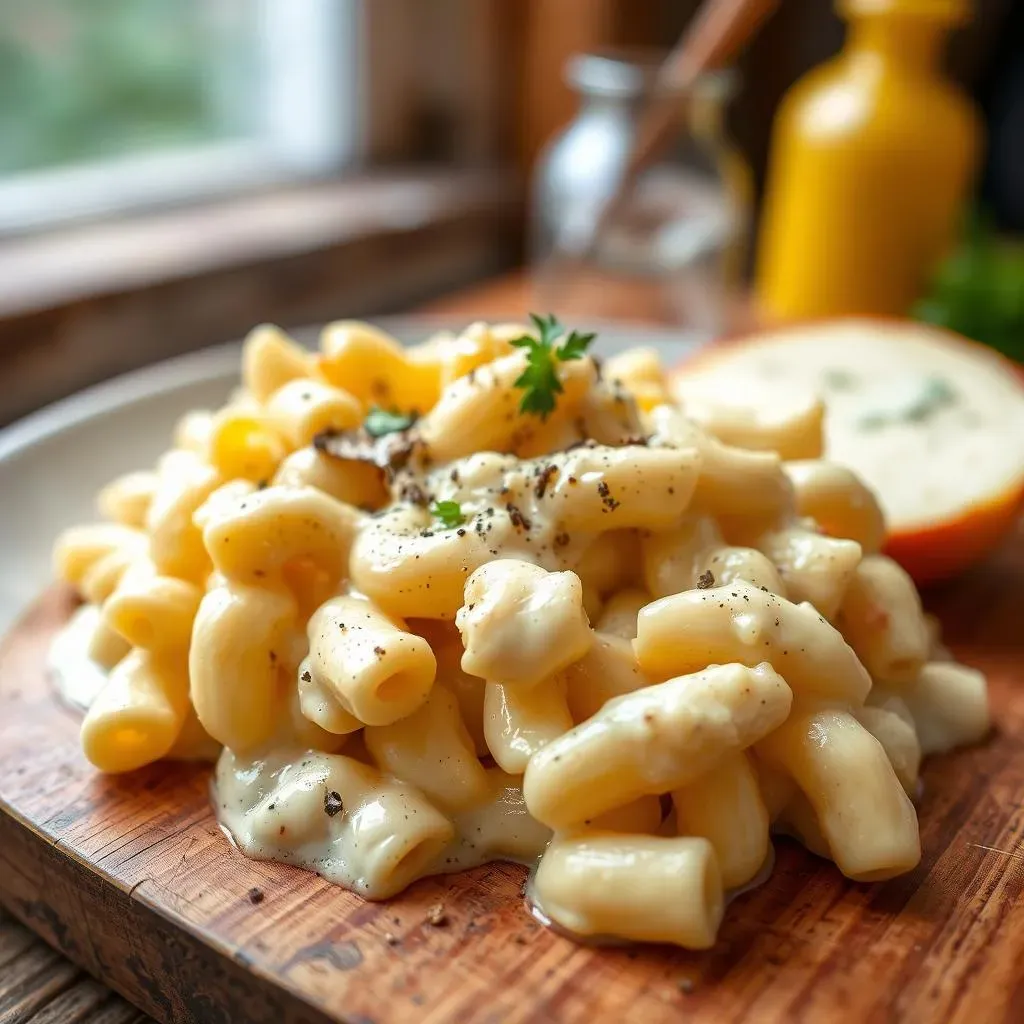
Crafting the Perfect LowCarb Mac and Cheese
Alright, let's get down to business. We've talked about why low-carb mac and cheese is a game-changer, and we've established that Gruyere is the star, but now it's time to actually make this magic happen. Crafting the perfect low-carb mac and cheese isn't as hard as you might think. It's all about understanding the key components and how they work together. Forget those complicated recipes with tons of steps, we are keeping it simple, and delicious. The first thing you need to consider is the pasta substitute. You need something that can hold its own and not turn into a mushy mess when you mix it with the cheese. I've tried a few different options, and honestly, some are better than others. Then, of course, we have the creamy cheese sauce, where Gruyere takes center stage. You'll need to get the right ratio of cream to cheese to achieve that perfect velvety texture. Trust me, once you've nailed these basics, you can customize your mac and cheese to your heart's content. So, are you ready to start cooking?
Now, let's talk about the low-carb pasta. This is where things can get a little tricky. Not all low-carb pasta is created equal. Some brands tend to get gummy or have a weird texture. My advice? Do some experimenting to find what you like best. I usually lean towards brands that use lupin flour or a blend of fibers. They tend to hold up better in a creamy sauce. Avoid those konjac-based pastas for this recipe; they don't absorb the sauce very well, and you'll end up with a watery mess. Also, remember to cook your pasta al dente. Overcooked low-carb pasta turns to mush faster than regular pasta, so keep a close eye on it. It's like a delicate dance between cooking it long enough but not too long. And don't forget to drain it well! Excess water is the enemy of a creamy cheese sauce.
Next up, the cheese sauce. This is where the magic happens! You want to start with heavy cream. It's the base of our creamy, dreamy sauce. Don't skimp on the cream; it's what gives the mac and cheese that rich, decadent feel. Gently heat it in a saucepan over medium-low heat. You don't want it to boil, just warm enough to melt the cheese. Now, for the Gruyere. Shred it up finely to ensure it melts evenly and smoothly. Add it to the cream, a little bit at a time, stirring constantly until it's fully melted and you have a nice, smooth sauce. Don’t rush this process; patience is key here. Keep stirring until the cheese is completely melted into the cream, and you have a beautiful, velvety sauce. You can also add a pinch of salt and a dash of black pepper to bring out the flavors. And that's it! No complicated roux or thickeners needed. Just pure, cheesy goodness.
Ingredient | Purpose |
|---|---|
Low-Carb Pasta | Provides the base and structure, replacing traditional high-carb pasta. |
Heavy Cream | Creates the creamy, rich base for the cheese sauce. |
Shredded Gruyere Cheese | Adds a nutty, complex flavor and melts beautifully for a smooth sauce. |
Salt | Enhances the flavors and balances the richness of the cheese. |
Black Pepper | Adds a subtle hint of spice and depth to the sauce. |
Tips for a Creamy, Dreamy Result
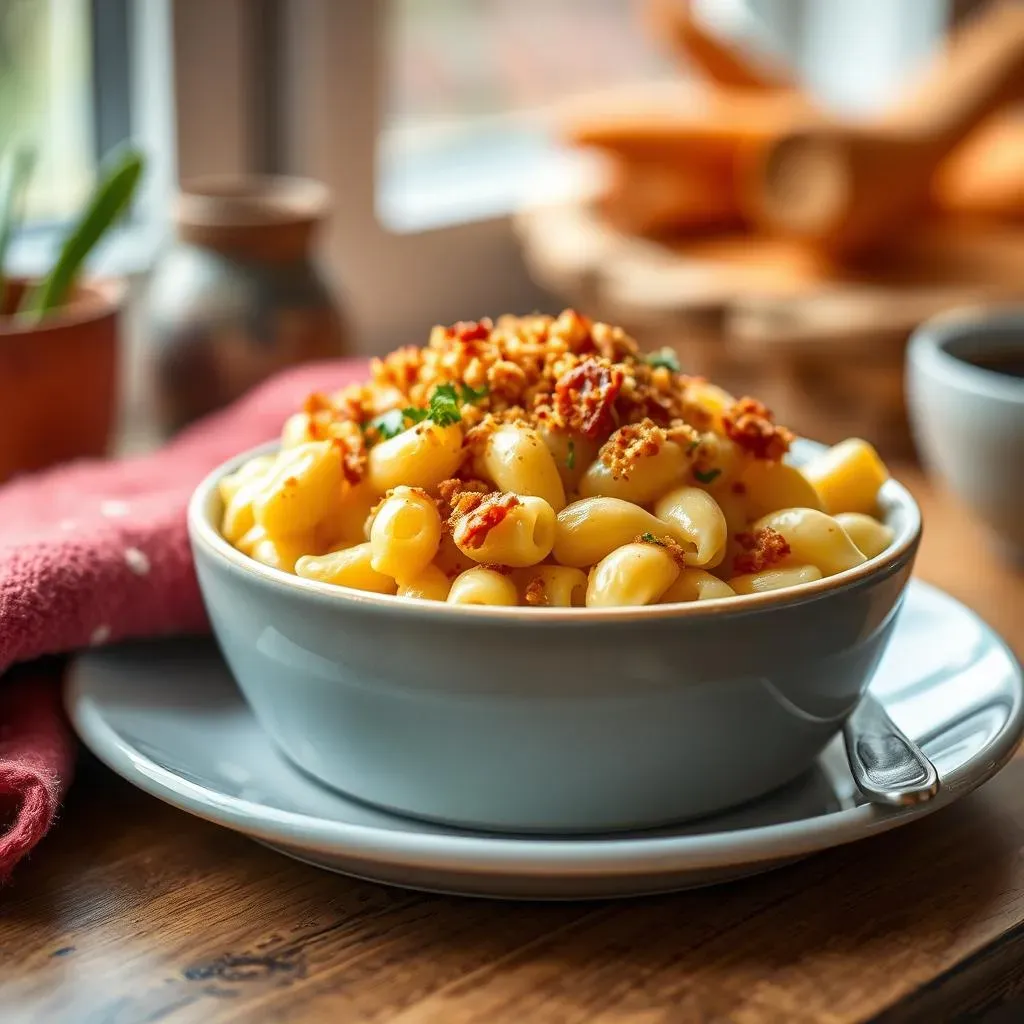
Tips for a Creamy, Dreamy Result
The Right Temperature is Key
Okay, so you've got your ingredients ready, but here’s a pro tip: temperature matters, a lot. Don't just dump everything into a hot pan and hope for the best. Start with your heavy cream on low to medium-low heat. The goal is to warm it gently, not boil it. If the cream gets too hot too fast, it can curdle or separate, and that's a one-way ticket to a grainy sauce. Patience is your best friend here. Think of it like a slow dance; you want everything to come together smoothly and gracefully. And when you add the cheese, make sure it's shredded finely. This helps it melt evenly and quickly, preventing any clumps. Adding it little by little, while stirring, will help you achieve that silky smooth texture we’re after. It’s all about that gradual melt, baby.
And don't forget to keep stirring! Stirring is like the heartbeat of your cheese sauce. It keeps everything moving, preventing the cheese from sticking to the bottom of the pan and ensuring a smooth, even consistency. Use a whisk for best results; it'll help you incorporate the cheese into the cream more efficiently. Stir gently, though, no need to go all crazy on it. And if you notice the sauce getting too thick, you can add a splash of extra cream to thin it out. It’s all about finding that perfect balance between thick and creamy. Remember, we're aiming for a sauce that coats the pasta beautifully, not one that sits on top like a thick blanket. The key is to watch the sauce closely, adjust the heat, and stir consistently to get that perfect texture.
Cheese Ratios and Add-Ins
While Gruyere is the star, don't be afraid to experiment with other cheeses to enhance the flavor. A little bit of sharp cheddar can add a nice tang, while parmesan can bring a salty, nutty element to the mix. But remember, Gruyere should always be the main cheese, the one that takes center stage. It’s like having a band with a lead singer; the other members are important, but the lead singer is the star. Also, consider adding a pinch of nutmeg to the sauce. It might sound weird, but it adds a subtle warmth that complements the cheese beautifully. It's like a secret ingredient that elevates the flavor profile without being overpowering. It's a small addition, but it makes a big difference. And if you're feeling adventurous, a dash of Dijon mustard can add a nice complexity.
Don't forget the seasoning! Salt and pepper are your best friends here. Season the sauce to taste, but don't be shy with the salt. It helps bring out the flavors of the cheese and balances the richness of the cream. Taste as you go, and adjust the seasoning as needed. It's important to get the seasoning right. It's like a conductor leading an orchestra; everything needs to be in perfect harmony to create a masterpiece. And if you're adding any spices or other flavorings, do it gradually and taste as you go. It’s about layering flavors, not overpowering them. The goal is to create a sauce that is not only creamy but also full of flavor. Keep in mind, you can always add more, but you can’t take it away.
The Final Touch
Once your sauce is ready, it's time to bring everything together. Gently toss the cooked and drained low-carb pasta with the cheese sauce, making sure every piece is coated in that cheesy goodness. You want to do this quickly so the sauce doesn't start to set. If the sauce is a little too thick, add a splash of extra cream or even a little bit of pasta water to loosen it up. And once everything is combined, serve immediately. The longer it sits, the more the sauce will thicken, and you might not get that perfect creamy texture. It’s like a masterpiece that is best enjoyed fresh. And if you want to take it to the next level, you can top it with some extra cheese and broil it for a few minutes to get a nice crispy topping. It adds a little extra texture and flavor that is just divine.
And there you have it! A perfect, creamy, dreamy low-carb mac and cheese. It’s not just about following a recipe; it's about understanding the process and making adjustments as you go. Cooking is an art, not a science, so don’t be afraid to experiment and have fun with it. And the best part? You can enjoy this classic comfort food without any of the guilt. It's a win-win situation, my friend. So go ahead, grab your ingredients, and get ready to create something truly amazing. And don’t forget to share your creations with me! I’m always excited to see what others come up with.
Tip | Description |
|---|---|
Low Heat | Warm the cream gently over low to medium-low heat to prevent curdling. |
Fine Shredding | Shred the cheese finely for even and quick melting. |
Constant Stirring | Stir continuously with a whisk to prevent sticking and ensure a smooth sauce. |
Gradual Additions | Add cheese gradually, stirring until fully melted before adding more. |
Taste as You Go | Season the sauce to taste and adjust flavors as needed. |
Customizing Your LowCarb Mac and Cheese
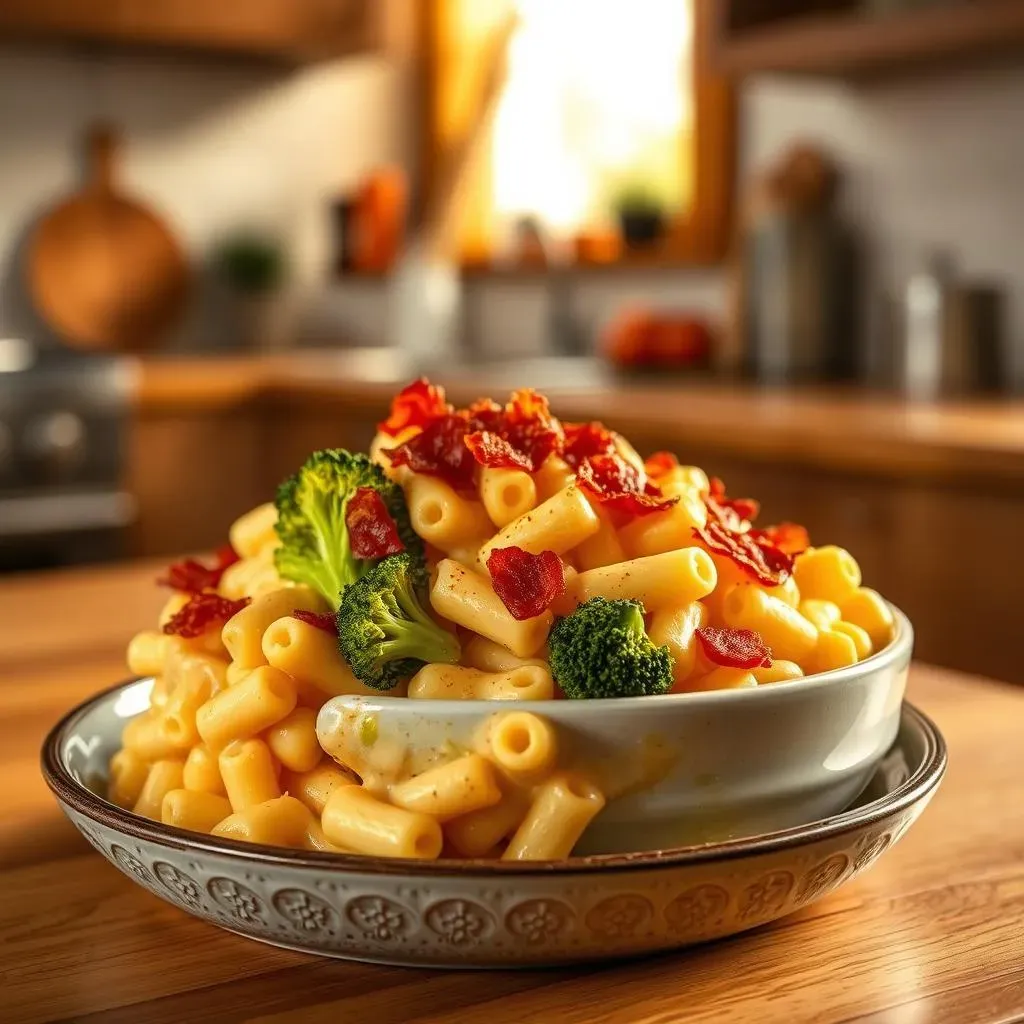
Customizing Your LowCarb Mac and Cheese
Spice It Up
Okay, so you've mastered the basic low-carb mac and cheese, but what if you want to kick it up a notch? This is where the fun begins! Don't be afraid to get creative and experiment with different flavors. I like to start by adding some heat. A pinch of red pepper flakes or a dash of hot sauce can add a nice kick that balances the richness of the cheese. If you want a smoky flavor, try adding a bit of smoked paprika. It's a game-changer, trust me. And for a more savory twist, a teaspoon of garlic powder or onion powder can work wonders. It's like giving your mac and cheese a little personality, making it truly your own. It’s all about finding what flavors make your taste buds dance.
And if you're not into spicy, there are tons of other options. Try adding some fresh herbs like thyme or rosemary. They add a lovely earthy note that complements the Gruyere perfectly. Or, if you want a brighter flavor, a squeeze of lemon juice can do the trick. It's like adding a little sunshine to your bowl of mac and cheese. Another great option is to add some roasted vegetables. Broccoli, cauliflower, or even mushrooms can add extra texture and nutrients. They add another layer of deliciousness to your mac and cheese, making it a complete meal. It’s all about playing with flavors and finding what makes your mac and cheese sing. So, go wild and see what you can create!
Flavor Addition | Description |
|---|---|
Red Pepper Flakes | Adds a spicy kick. |
Smoked Paprika | Adds a smoky flavor. |
Garlic Powder | Adds a savory note. |
Fresh Herbs (Thyme, Rosemary) | Adds an earthy aroma. |
Lemon Juice | Adds a bright, zesty flavor. |
Protein Power-Ups and Texture Twists
Now, if you want to make your low-carb mac and cheese a complete meal, consider adding some protein. Cooked bacon or crispy pancetta are always a good choice. They add a salty, smoky flavor that pairs beautifully with the cheese. If you're not into pork, try adding some shredded chicken or cooked shrimp. They add a nice dose of protein and make the mac and cheese more substantial. It's like turning a side dish into a main course, and who doesn't love that? And if you want to add some extra crunch, try topping it with some toasted nuts or crispy fried onions. It's all about adding layers of flavors and textures to elevate your mac and cheese game. The possibilities are endless!
And don't forget about the texture! You can add some roasted vegetables like broccoli or cauliflower for some extra crunch and nutrients. They not only add texture, but also make your mac and cheese more visually appealing. If you want a creamy texture, try adding a little cream cheese to the sauce. It makes it extra smooth and velvety. If you like a bit of a bite, try adding some pickled jalapenos or a dash of hot sauce. They add a nice little kick that is sure to wake up your taste buds. It's like giving your mac and cheese a makeover, making it a dish that is both delicious and visually appealing. The key is to have fun and experiment with different combinations until you find your perfect match.
Storing and Reheating Your Masterpiece
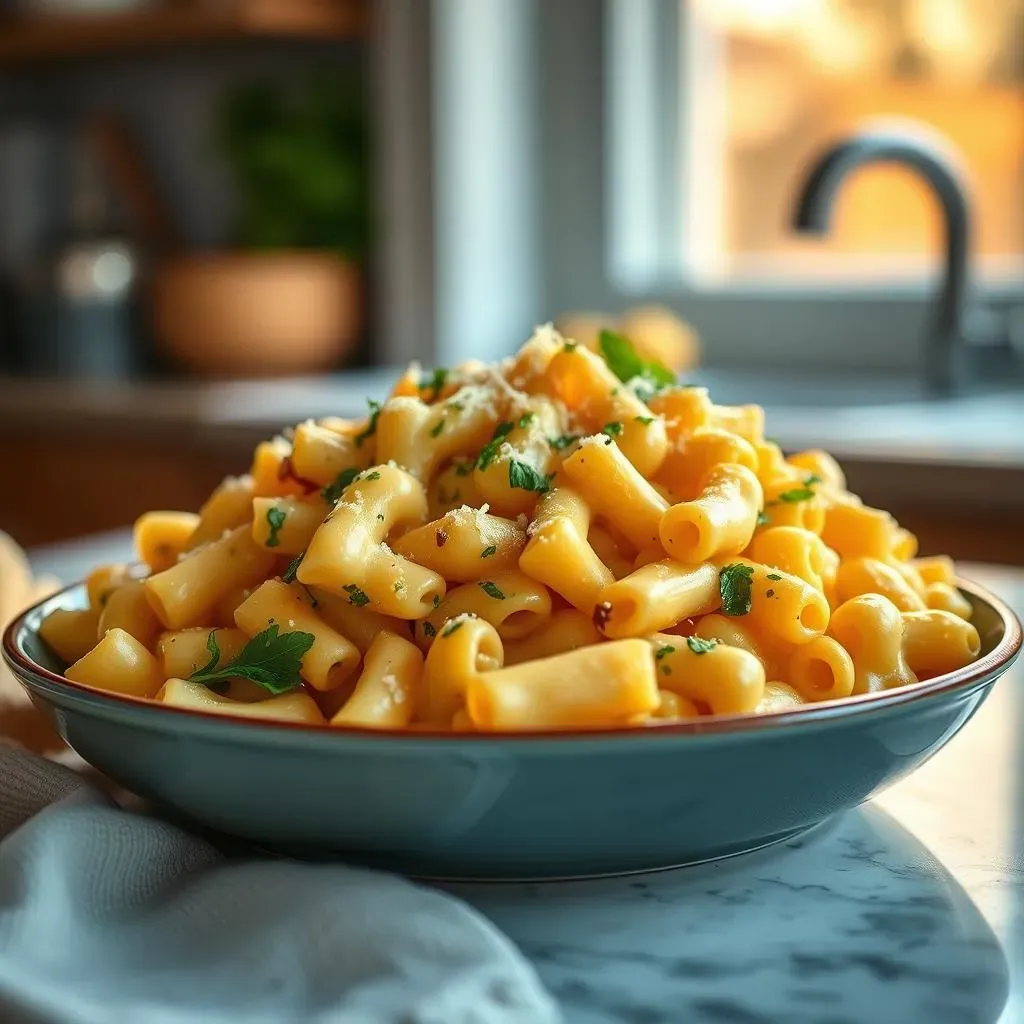
Storing and Reheating Your Masterpiece
The Art of Proper Storage
Alright, so you've created this amazing low-carb mac and cheese, and maybe, just maybe, you have some leftovers. Don't worry, we've all been there! Storing it correctly is key to keeping it just as delicious as the first time. The most important thing is to let it cool down completely before you put it in the fridge. If you put it in hot, the condensation will make it watery, and nobody wants that. Once it's cooled, transfer it to an airtight container. This is crucial for preventing it from drying out or absorbing any weird fridge odors. I usually use glass containers, but any airtight container will do the trick. This will help your mac and cheese stay fresh and delicious for longer. It's like giving your masterpiece a cozy little home until you're ready to enjoy it again.
And let’s talk about how long it'll last. In the fridge, your low-carb mac and cheese will be good for about 3 to 4 days. But, honestly, it tastes best within the first two days. After that, the texture might change a bit, although it’ll still be safe to eat. If you made a huge batch, and know that you won’t be able to finish it within 4 days, then freezing is the best option. Just make sure to portion it out into freezer-safe containers before freezing. This way, you can pull out just what you need without thawing the whole batch. Think of it like prepping for the future you, the one who will be craving mac and cheese on a busy night. And remember, labeling your containers with the date is always a good idea, so you don’t end up with a mystery meal in the freezer. It's like a little time capsule of cheesy goodness.
Reheating Like a Pro
Now, for the moment of truth: reheating. The biggest challenge when reheating mac and cheese is keeping it creamy and not ending up with a dry, clumpy mess. The microwave is quick and convenient, but it can also dry out your mac and cheese pretty fast. My trick? Add a splash of cream or milk before you reheat it. This will help keep it nice and moist. Heat it in short intervals, stirring in between, until it’s heated through. This way, you can control the temperature and prevent it from overheating. It's like giving your mac and cheese a little spa treatment, bringing it back to life with a touch of moisture.
If you have a little more time, the stovetop is a great option. Add your mac and cheese to a saucepan over low heat, along with a splash of cream or milk. Stir it gently and consistently until it’s heated through and creamy again. This method is a bit more hands-on, but it gives you more control over the texture. And if you're reheating it from frozen, it's best to thaw it in the fridge overnight before reheating. If you’re in a hurry, you can microwave it from frozen, but it might not be as creamy. Just remember to add that extra cream or milk to keep it from drying out. It's like bringing your mac and cheese back to its former glory, one spoonful at a time. So, whether you're reheating it in the microwave or on the stovetop, the key is to be gentle, add a little moisture, and reheat it slowly to keep it creamy and delicious.
Method | Description | Tips |
|---|---|---|
Refrigerator Storage | Store in an airtight container. | Consume within 3-4 days for best quality. |
Freezer Storage | Store in freezer-safe containers. | Thaw overnight in the fridge before reheating. |
Microwave Reheating | Reheat in short intervals. | Add a splash of cream or milk to keep it moist. |
Stovetop Reheating | Reheat over low heat with constant stirring. | Add a splash of cream or milk to maintain creaminess. |
Freezing for Future Cravings
Freezing your low-carb mac and cheese is a total game-changer for those times when you need a quick and satisfying meal. It's like having a secret stash of comfort food at your fingertips. To freeze it properly, make sure it’s completely cooled before transferring it to freezer-safe containers. I like to use individual portions. This way, you can easily thaw and reheat just what you need. It’s also a great way to prevent waste. And make sure to leave a little bit of space at the top of the container, as the mac and cheese will expand when it freezes. It's like giving it some room to breathe in its icy hibernation.
When you’re ready to enjoy your frozen mac and cheese, it's best to thaw it in the fridge overnight. This ensures that it thaws evenly and helps maintain its creamy texture. If you're in a hurry, you can thaw it in the microwave, but keep a close eye on it to prevent it from getting too hot or drying out. And remember, whether you're thawing it in the fridge or the microwave, always add a splash of cream or milk before reheating. It's the secret to keeping it creamy and delicious. With these simple tricks, you can enjoy your low-carb mac and cheese anytime, anywhere. It's like having your own personal chef, ready to whip up a cheesy masterpiece whenever you want. And who wouldn't love that?
Nutritional Information: What You Need to Know
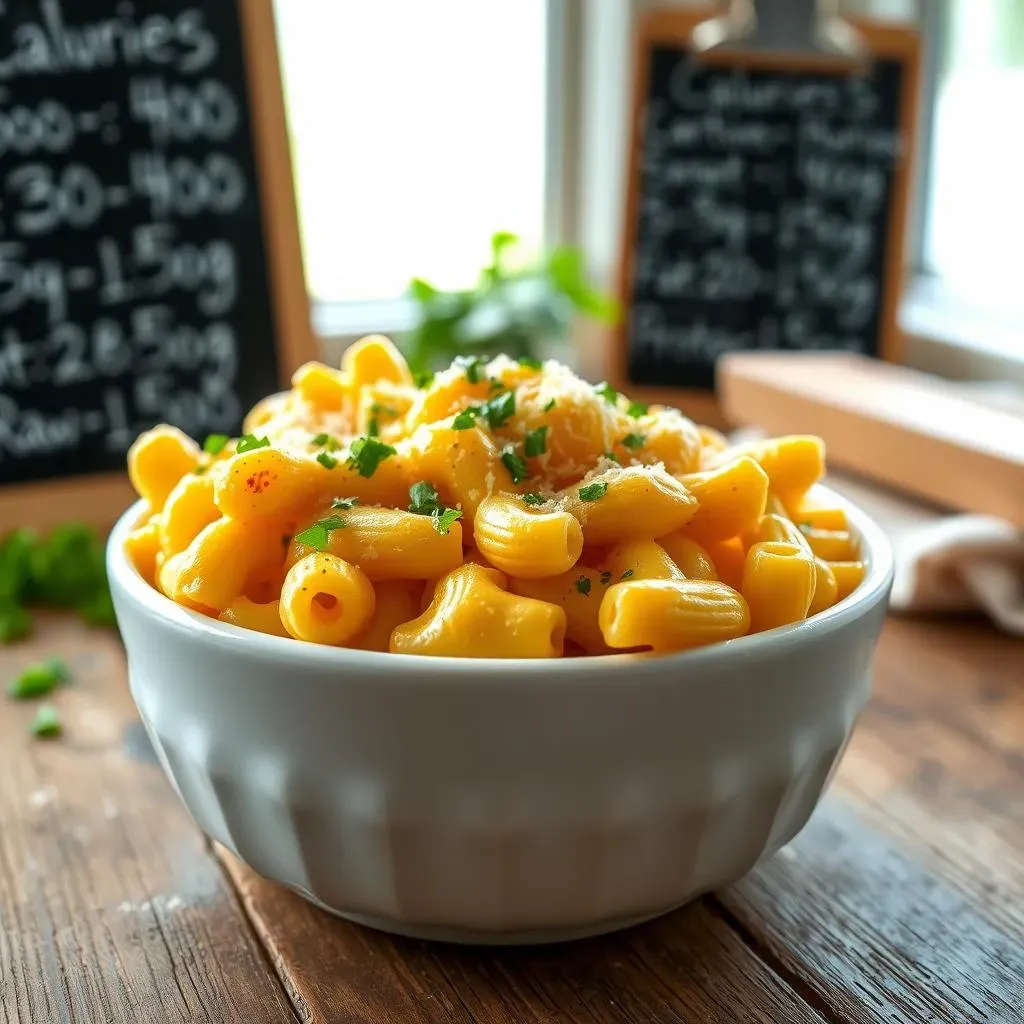
Nutritional Information: What You Need to Know
Counting Carbs and Calories
Okay, so we've covered how to make the most amazing low-carb mac and cheese, but let's get real for a second: what about the numbers? If you're watching your carb intake or keeping an eye on calories, it's good to know what you're actually putting into your body. Traditional mac and cheese is a calorie and carb bomb, but the low-carb version is a whole different story. The exact nutritional information will vary depending on the specific ingredients you use, especially the type of low-carb pasta and cheese. But generally speaking, you'll see a significant reduction in carbs and calories compared to a traditional recipe. It's all about making informed choices, my friend. It's like knowing what's in your fuel tank before you hit the road.
When calculating the nutritional information, the low-carb pasta is the first thing to consider. Some options are lower in carbs than others, so always check the labels. And don't forget that the cheese and cream add calories and fat. It’s important to use full-fat cream and real cheese, not the low-fat stuff. The fat is what makes the sauce creamy and delicious. It’s also important to pay attention to portion sizes. It's easy to get carried away with a big bowl of cheesy goodness, but keeping your portions in check is key to managing your intake. So, while we’re all about enjoying our favorite foods, we also need to be mindful about what we eat. It’s a balancing act, and we're here to help you find that sweet spot.
Breakdown of Macros
Let's break down the macronutrients in our low-carb mac and cheese. First up, carbohydrates. As the name suggests, this version is much lower in carbs than traditional mac and cheese. Most of the carbs will come from the low-carb pasta, so be sure to choose a low-carb pasta option. Next, we have fats. The heavy cream and Gruyere cheese are both high in fat, but they're also what make the dish so satisfying and flavorful. Don't be afraid of fats; they’re an essential part of a balanced diet. They also contribute to satiety, which means you'll feel full and satisfied for longer. Lastly, we have protein. While the mac and cheese isn't super high in protein, the cheese does contribute to your daily intake. And if you decide to add some protein like bacon or chicken, you’ll be upping the protein content even more. This is about making informed choices and understanding how these macronutrients work together.
Making it Work for Your Needs
The best thing about making your own low-carb mac and cheese is that you have complete control over the ingredients. You can tweak the recipe to fit your specific dietary needs and preferences. If you're watching your calories, use a little less cream or cheese, or add some extra vegetables to bulk up the dish without adding extra calories. If you need more protein, add some chicken, shrimp, or even some tofu. It's all about making it work for you. And if you’re following a keto diet, make sure that your low-carb pasta is suitable for keto. Some brands are better than others, so always check the labels. It’s like having a customizable recipe that you can adjust as you go. And remember, the key to a balanced diet is variety and moderation. Don’t deprive yourself of your favorite foods; just find ways to make them healthier. It's about making smart choices and enjoying your food without any guilt. So, go ahead, customize your mac and cheese and make it your own!
And here's a little reminder: It's always a good idea to consult with a nutritionist or a registered dietitian if you have specific dietary concerns or health conditions. They can help you create a personalized meal plan that meets your individual needs. They can also provide advice on portion sizes and help you make informed choices about your diet. Remember, everyone is different, and what works for one person might not work for another. It's about finding what works best for you and your body. And most importantly, it's about enjoying your food and living a balanced and healthy lifestyle. So, go ahead, enjoy your low-carb mac and cheese, knowing that you’re making smart choices for your health. It’s all about finding that balance and enjoying the journey.
Nutrient | Typical Amount (per serving) | Notes |
|---|---|---|
Calories | 300-400 | Varies based on ingredients and portion size. |
Carbohydrates | 5-10 grams | Mostly from low-carb pasta. |
Fat | 25-35 grams | Primarily from heavy cream and cheese. |
Protein | 10-15 grams | From cheese and optional protein additions. |
Troubleshooting Common Issues

Troubleshooting Common Issues
Why is My Sauce Grainy?
Okay, so you're trying to make your low-carb mac and cheese, and suddenly, your sauce is looking a little, well, grainy. It's like, instead of that smooth, velvety texture, you've got tiny little cheese bits floating around. This is a common issue, and the good news is, it's usually pretty easy to fix. The main culprit here is usually temperature. If the heat is too high, or if you added the cheese too quickly, the proteins in the cheese can seize up and cause that grainy texture. It’s like the cheese is throwing a tantrum because it’s too hot. You need to keep that heat low and slow, and add the cheese gradually, stirring constantly. Think of it as gentle coaxing, not a sudden shock.
Another thing to watch out for is the type of cheese you’re using. Sometimes, pre-shredded cheese is coated with cellulose or other anti-caking agents, which can prevent it from melting smoothly. Always go for freshly shredded cheese for the best results. And if you're using a cheese that's been sitting in the fridge for a while, it might have lost some of its moisture, which can also contribute to a grainy texture. It’s like trying to melt a dried-out sponge; it's just not going to work as well. So, always use fresh, good quality cheese, keep that heat low, and add the cheese gradually. With a little patience and attention to detail, you can totally avoid that grainy sauce and achieve that creamy texture you're after.
My Sauce is Too Thick or Too Thin
Alright, so you’ve avoided the grainy sauce, but now your mac and cheese is either too thick or too thin. It’s like, Goldilocks had trouble with porridge, you're having trouble with cheese sauce. Don’t worry, this is also a common issue, and it’s usually an easy fix. If your sauce is too thick, it’s usually because it’s been sitting on the heat for too long or you’ve used too much cheese. The solution? Add a splash of extra cream or milk to thin it out. Start with a small amount, and stir it in until you get the right consistency. It’s like adding a little water to a too-thick paint; it thins it out and makes it easier to work with. And if you don’t have cream or milk on hand, you can use a little bit of pasta water. It's like a magic potion that will bring your sauce back to life.
On the other hand, if your sauce is too thin, it’s usually because you haven't used enough cheese or the heat was too low. To fix this, you can add a little more shredded cheese, stirring constantly until it melts and the sauce thickens. If the sauce isn't thickening enough, you can also simmer it for a few minutes over low heat. This will help reduce some of the liquid and thicken the sauce. It's like cooking down a soup; it concentrates the flavors and makes it thicker. And remember, the sauce will also thicken as it cools, so don't overdo it. It’s all about finding that perfect balance between thick and creamy. With a little adjustment, you’ll have that perfect consistency in no time.
Issue | Cause | Solution |
|---|---|---|
Grainy Sauce | High heat, cheese added too quickly, pre-shredded cheese | Use low heat, add cheese gradually, use freshly shredded cheese |
Sauce Too Thick | Overcooking, too much cheese | Add a splash of cream or milk |
Sauce Too Thin | Not enough cheese, low heat | Add more cheese, simmer over low heat |
My Final Thoughts on LowCarb Mac and Cheese
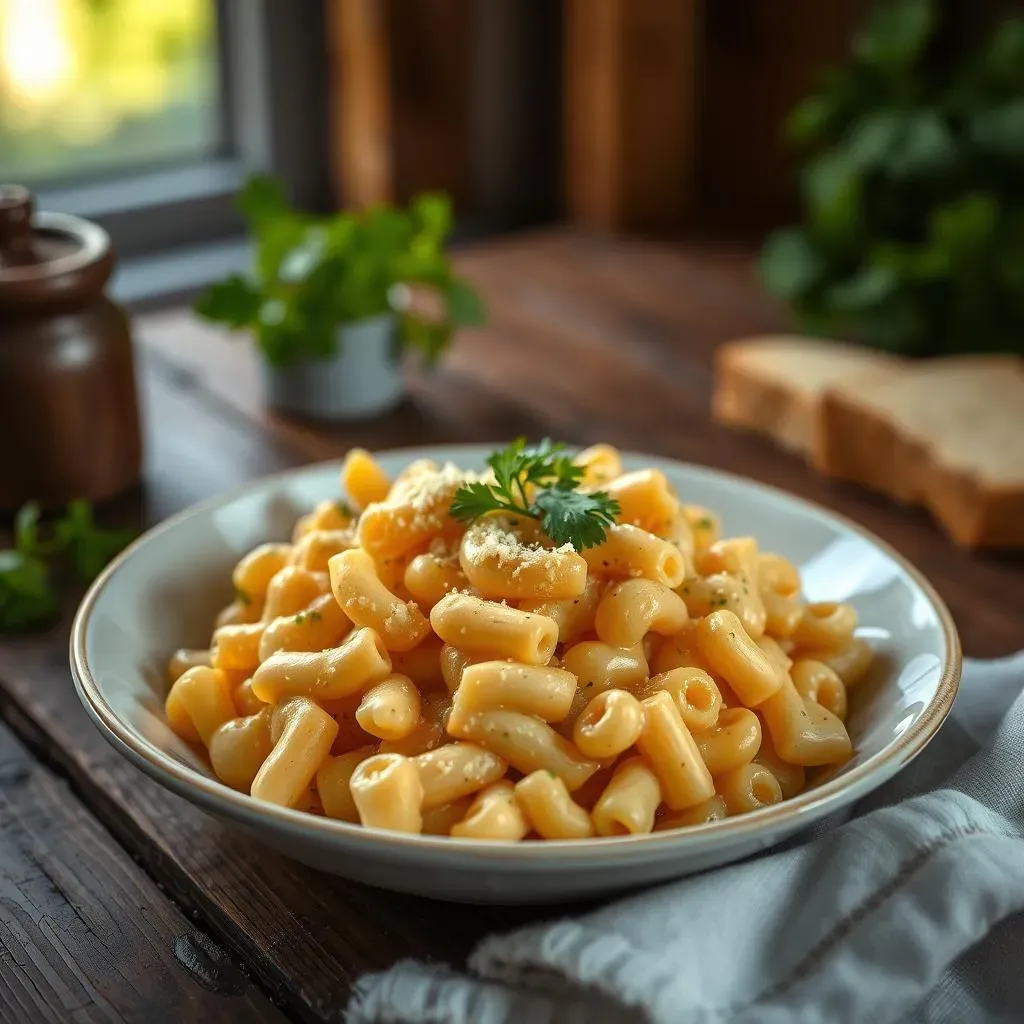
My Final Thoughts on LowCarb Mac and Cheese
The Joy of Guilt-Free Indulgence
So, here we are at the end of our cheesy journey, and I have to say, I'm pretty excited about what we've accomplished. We've taken the ultimate comfort food, mac and cheese, and transformed it into a low-carb masterpiece that you can enjoy without any of the guilt. It's not just about cutting carbs; it's about finding ways to enjoy our favorite foods while still being mindful of our health. And let's be honest, sometimes you just need a big bowl of cheesy goodness, and now you can have it without any of the negative side effects. It's like having your cake and eating it too, or in this case, your mac and cheese and enjoying it too! It’s about smart choices, not deprivation, and that’s a game-changer in my book.
This whole process has shown me that healthy eating doesn't have to be boring or restrictive. It's about finding creative solutions and making the necessary adjustments. It's about understanding your ingredients and how they work together. And it's about having fun in the kitchen and creating something that you love. And honestly, what's not to love about creamy, cheesy mac and cheese that fits into your healthy lifestyle? It's a win-win situation, and I'm all about that. So, go ahead, give this recipe a try, and see for yourself how delicious low-carb mac and cheese can be. You might just be surprised at how easy it is to make and how satisfying it is to eat. It's a testament to how we can adapt and enjoy our favorite meals while prioritizing our health.
A Recipe for Success
As we wrap up, I want to leave you with a few final thoughts. First, don't be afraid to experiment and make this recipe your own. Add your favorite spices, try different cheeses, and find what works best for you. Cooking is an art, not a science, so have fun with it and let your creativity shine. And second, remember that cooking is a journey, not a destination. There will be times when your sauce is too thick or too thin, or your pasta isn't quite cooked right. But it's okay; these are all part of the learning process. Just keep practicing, and you'll get better with each attempt. It's like learning to ride a bike; you might fall a few times, but eventually, you'll get the hang of it.
And most importantly, enjoy the process! Cooking should be fun, relaxing, and rewarding. It's a chance to connect with your food and nourish your body. So, grab your ingredients, put on some music, and let your creativity flow. And don't forget to share your creations with me! I'm always excited to see what others come up with. This low-carb mac and cheese is more than just a recipe; it's a reminder that we can enjoy our favorite foods while still prioritizing our health. It's about finding that balance and enjoying the journey. So, go ahead, enjoy your cheesy goodness, and let me know how it turns out. I'm excited to see what you create!
Key Takeaway | Description |
|---|---|
Guilt-Free Enjoyment | Enjoy mac and cheese without the carb overload. |
Customization | Experiment with flavors and ingredients to make it your own. |
Learning Process | Embrace the journey and learn from each attempt. |
Joy of Cooking | Find pleasure and relaxation in the cooking process. |
Health and Balance | Prioritize health without sacrificing favorite foods. |